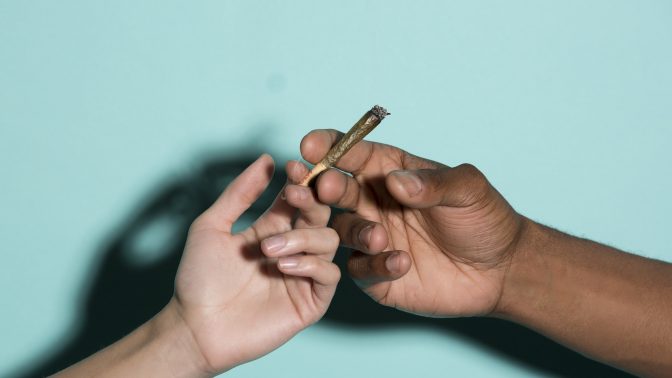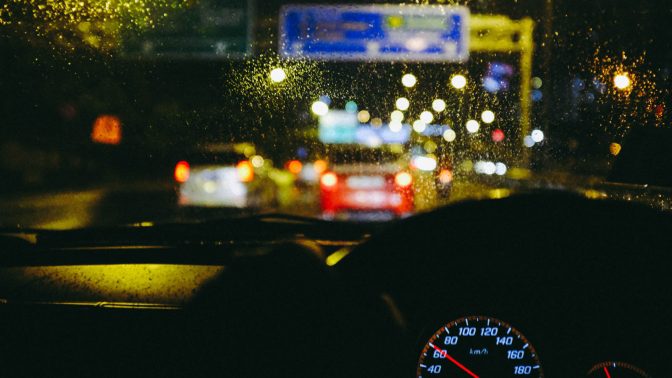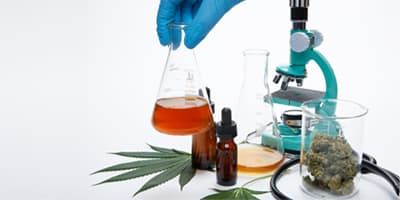A new cannabinoid has been discovered, and the ramifications could be massive. Scientists funded by the UNIHEMP research project have discovered a new psychoactive molecule: Δ9-Tetrahydrocannabiphorol, or THCP; and they believe that there are great scientific implications for the phytocannabinoid.
Phytocannabinoids are cannabinoid molecules that are specifically produced by plants. There are several types of cannabinoids, including endocannabinoids, synthetic cannabinoids, and phytocannabinoids.
Endocannabinoids are compounds that are produced within the body by an organism's endocannabinoid system; and synthetic cannabinoids are man-made chemicals that cannot be found in nature. Phytocannabinoids, on the other hand, are a different beast altogether. They are those that naturally occur in plants and are found in a variety, including echinacea. However, the plant species in which phytocannabinoids are most prominent is cannabis.
Because of cannabis' status as a Schedule I controlled substance in the US, there are several barriers that prohibit the scientific study of the plant and its constituents. Thus, a considerable portion of cannabis research takes place abroad. Many clinical and laboratory studies of cannabis take place in Israel and Canada, where there is federal research funding to support this work; but, the newly discovered THCP was characterized by a group of Italian scientists.
Unlike the US, government funding for cannabis research is relatively commonplace in Europe. The discovery of THCP was enabled by the UNIHEMP project, which is sponsored by the European Regional Development Fund. A multi-disciplinary team of Italian scientists was responsible for the discovery of this novel cannabinoid, led by Giuseppe Cannazza of the University of Modena and Reggio Emilia.
The researchers' findings were published in late 2019 in the journal Nature.
THCP is 33-times more active than THC
Throughout the duration of the project, the group studied a medicinal cannabis cultivar, dubbed FM2, which was supplied by the Military Chemical Pharmaceutical Institute in Florence. Using a variety of scientific characterization techniques, the researchers observed two novel cannabinoids, THCP and CBDP, and isolated them from other cannabinoids that were present. Following this discovery, the group artificially synthesized THCP and CBDP to create reference materials, and the synthesized versions were successfully used to verify the natural expression of the two cannabinoids in the FM2 cultivar.
After the confirmation of the identity of the two cannabinoids, the group turned its focus to THCP. To study the compound, they pursued an in vitro experiment with cultured cells. This experiment tested the binding affinity of THCP with CB1 and CB2 receptors, using synthetic cannabinoids as reference materials. It was shown that, when comparing THCP-related results to the previously reported data of other cannabinoids against the CB1 receptor, THCP is 33-times more active than delta-9 THC.
This finding is critical because the group also found that the chemical was present in FM2 at 0.0029%, whereas THC was found to be expressed at 3.9%; so, even in smaller amounts, THCP is more active than THC.
They also tested the cannabimimetic activity of the molecule. Cannabimimetic activity is a measure of how well a substance replicates the effects of more well-characterized cannabinoids which bind to the CB1 receptor. An in vivo experiment involving mice was performed. Herein, the influence of THCP on body temperature, spontaneous activity, immobility, and pain was determined — the results of these tests confirmed that THCP acts similarly to other cannabinoids like delta-9 THC.
Will THCP be important?
According to the study, even at lower doses, THCP has more cannabimimetic activity than THC. Further, the group posits that THCP could account for the wide variability of patient responses in cannabis-based therapies, even amongst cultivars with equal THC doses. This means that cannabis' psychotropic effects, which the scientific community attributes to THC, may actually be due to the presence of THCP.
Unfortunately, none of the original researchers could be reached for comment. However, experts in the field do have varying opinions regarding the study. Dr. Cecilia J. Hillard of the Medical College of Wisconsin said, “I think it is well designed.” She goes on, “[The study] has two important gaps, in my opinion. First, they should have compared the in vivo effects of THCP to that of THC 'head to head' so that relative potencies could be assessed. Second, I would like to know whether THCP has greater efficacy to activate the [CB1 receptor] in particular. THC is relatively safe because it has low efficacy at the receptor. If THCP has high efficacy (like the synthetic analogs that have also increased the tail length), it is a more concerning finding, as it would suggest that strains making a lot of THCP could be more dangerous to use than those that do not.”
Expanding on how THCP could be more dangerous, Hillard continued, “The so-called 'spice' compounds are synthetic agonists of the CB1 receptor. They are full agonists, meaning that they are very strong activators of the CB1 receptor. Compared to THC, these drugs have significant adverse effects and produce significant dependence (addiction). So, my issue is that we do not know yet whether THCP is like THC, a partial agonist, or like the synthetic compounds, a full agonist. And my concern is that, if it is the latter, cannabis strains high in THCP will have more adverse effects than those that are low.”
Dr. Samuel Banister of The University of Sydney states, “[The study] was well designed and executed,” concurring with Dr. Hillard. However, he goes on to disagree with the group's assessment that THCP may account for the variability of psychotropic effects across various cannabis cultivars: “While this possibility cannot be ruled out, the known potency differences for THC and THCP at cannabinoid receptors is relatively small, while the difference in abundance of each in cannabis is enormous. The same is true of CBD and CBDP, although CBD requires even higher doses to achieve many of its pharmacological effects. For this reason, I do not feel that minor or trace phytocannabinoids like THCP or CBDP contribute significantly to the psychoactive effects of different cannabis strains.”
How this novel cannabinoid plays out in both medical and recreational use is yet to be determined, as much more research is needed. Nonetheless, this new evidence suggests that analytical laboratories in US regulated markets may need to expand their testing panel to include THCP.
Featured graphic by David Lozada/Weedmaps





